Table of Contents
- Method 1. Change Background Using “Format Background”
- Method 2. Use a Custom Background Image
- Method 3. Apply Background to All Slides via Slide Master
- Method 4. Change Background with VBA Macro
- Method 5. Change Background Programmatically with Python
- Comparison Table: Which Method Should You Choose?
- Summary
- FAQs About Changing Background of Slides
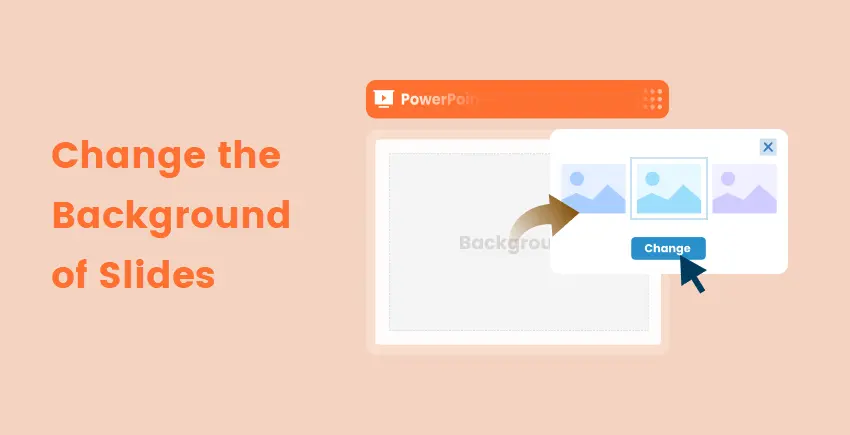
PowerPoint is widely used for delivering ideas, reports, and marketing content. A slide’s background does more than decorate — it sets the tone, improves readability, and reinforces branding. Choosing the right background can make any presentation more professional and visually appealing.
Slide backgrounds can be customized manually using built-in tools like solid colors, gradients, patterns, or images. For advanced users, automation with VBA or Python (Spire.Presentation) helps save time on multiple slides or presentations. This article covers five practical methods for changing slide backgrounds, from manual edits to programmatic solutions.
Method Overview
- Method 1. Change Background Using “Format Background”
- Method 2. Use a Custom Background Image
- Method 3. Apply Background to All Slides via Slide Master
- Method 4. Change Background with VBA Macro
- Method 5. Change Background Programmatically with Python
Method 1. Change Background Using “Format Background”
One of the easiest ways to change a slide’s background is through PowerPoint’s Format Background feature. It offers several fill options — Solid, Gradient, Picture or Texture, and Pattern — all accessible from a single pane.
How to do it:
- Open your PowerPoint presentation.
- Select the slide you want to modify.
- Go to the Design tab in the ribbon.
- Click Format Background on the far right.
- Choose your preferred fill type:
- Solid Fill: Pick a single color for a clean and professional look.
- Gradient Fill: Blend two or more colors smoothly for a dynamic effect.
- Picture or Texture Fill: Apply an image or one of PowerPoint’s built-in textures.
- Pattern Fill: Use repeating designs like stripes or dots for subtle backgrounds.
- Click Apply to All to use the same background on every slide, or leave it unchecked to apply only to the current slide.
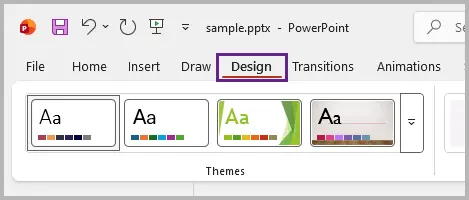

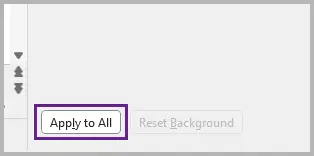
Tips:
- Choose colors that contrast well with your text and visuals. For readability, use light backgrounds with dark text or vice versa.
- Use the Format Painter to copy a background style from one slide to another quickly.
When to use it:
This method is ideal for most users who want a consistent, professional background without any effort. It’s quick, intuitive, and integrates seamlessly with PowerPoint’s built-in themes.
Method 2. Use a Custom Background Image
While Format Background supports picture fills, manually inserting an image gives you extra creative control. Use this approach when you need to position, crop, layer, or partially cover the slide with visuals — for example, placing a hero image, offsetting a photo behind text, or composing multiple images and shapes.
Quick guide:
- Go to Insert → Pictures → This Device (or online source).
- Choose and insert your image.
- Resize or crop it to fit your design.
- Right-click the image → Send to Back so that text and objects appear on top.
- Adjust transparency if needed to prevent the background from overwhelming the slide content.
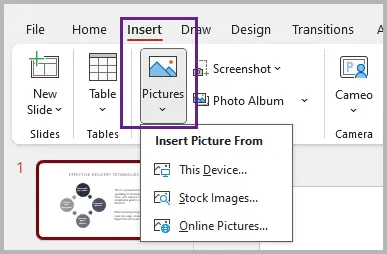
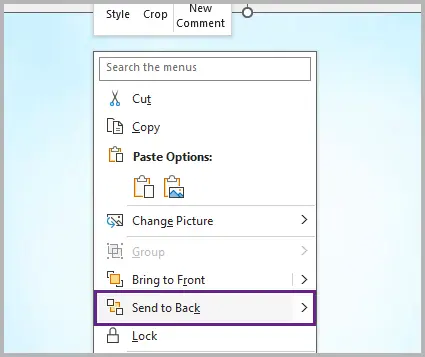
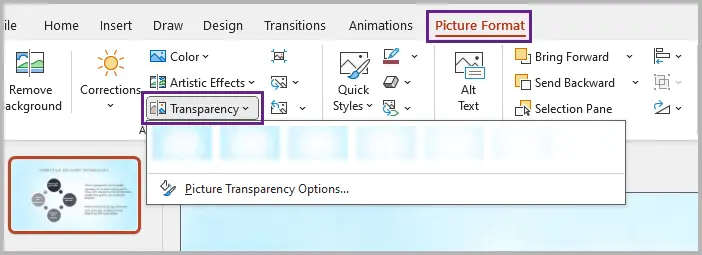
Tips:
- Use this method for standout slides, such as cover pages or transitions, where you want a distinct image separate from the rest of the deck.
- Keep file sizes small — compress large images to prevent slow presentation loading.
When to use it:
Choose this approach when you need precise placement, a unique composition, or layered visual effects beyond what Format Background provides.
Method 3. Apply Background to All Slides via Slide Master
If you want to apply a background consistently across every slide — including future ones you’ll add — the Slide Master is the best solution. This method ensures your presentation maintains uniform branding and saves time when editing large decks.
Step-by-step:
- Go to View → Slide Master .
- Select the topmost master slide in the left panel.
- Click Background Styles → Format Background and choose your desired background (color, gradient, picture, or pattern).
- Close the Slide Master view to return to the normal slide editor.


Tips:
- Create multiple Slide Master layouts, each with a different background, to visually separate presentation sections.
- Lock key elements (logos, background shapes) in the master to prevent accidental edits.
When to use it:
Use the Slide Master when creating templates, corporate presentations, or educational decks that require a consistent background across all slides and layouts.
Method 4. Change Background with VBA Macro
For power users comfortable with scripting, VBA (Visual Basic for Applications) provides a way to automate background changes directly within PowerPoint. It’s useful when you need to update multiple slides or presentations quickly with the same settings.
Example VBA script:
Sub SetSlideBackgroundColor()
Dim sld As Slide
For Each sld In ActivePresentation.Slides
sld.FollowMasterBackground = False
sld.Background.Fill.ForeColor.RGB = RGB(100, 149, 237) 'Sky blue
Next sld
End Sub
Here's how to do it:
- Press Alt + F11 to open the VBA editor in PowerPoint.
- Right-click on the project name, and select Insert → Module .
- Copy and paste the provided VBA code into the module.
- Press F5 to execute the macro, which will change the background of all slides.
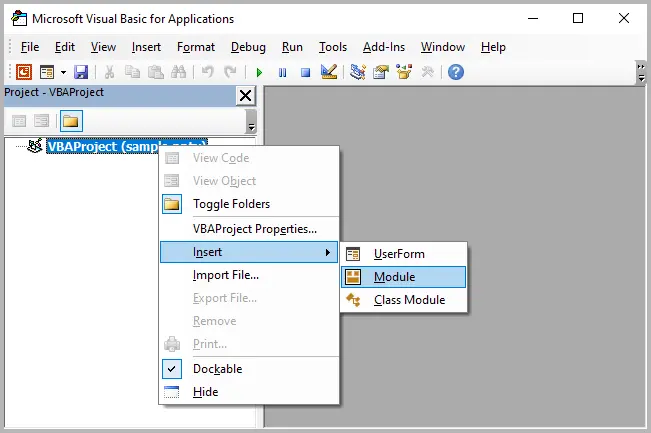
When to use it:
VBA is best for users who already work inside PowerPoint and need fast, repeatable automation — for example, corporate template updates or bulk formatting tasks.
Method 5. Change Background Programmatically with Python
For developers or analysts who want to generate presentations dynamically, Spire.Presentation for Python provides a powerful way to manipulate PowerPoint files, including changing slide backgrounds, without opening PowerPoint.
Installation:
pip install spire.presentation
Here is an example of how to apply a solid background color to all slides, using Spire.Presentation for Python:
from spire.presentation import *
# Create a Presentation object
presentation = Presentation()
# Load the PowerPoint file
presentation.LoadFromFile("Input.pptx")
# Loop through all slides
for slide in presentation.Slides:
# Access and customize background
background = slide.SlideBackground
background.Type = BackgroundType.Custom
background.Fill.FillType = FillFormatType.Solid
background.Fill.SolidColor.Color = Color.get_LightYellow()
# Save the modified presentation
presentation.SaveToFile("AllSlidesBackground.pptx", FileFormat.Pptx2013)
presentation.Dispose()
Core steps explained:
- Loads an existing PowerPoint file.
- Iterates through all slides.
- Sets a custom solid color as the background.
- Saves the modified presentation.
Read Further: Set Background Color or Picture for PowerPoint Slides in Python
Output:

Why use Spire.Presentation:
- Works across platforms (Windows, macOS, Linux).
- Allows bulk automation (apply backgrounds to hundreds of slides).
- Can integrate with data sources (Excel, XML, databases) for dynamic slide creation.
Comparison Table: Which Method Should You Choose?
| Method | Skill Level | Best For | Scope | Flexibility |
|---|---|---|---|---|
| Format Background | Beginner | Quick, per-slide edits | Single or all slides | Moderate – offers multiple fill options |
| Custom Background Image | Beginner–Intermediate | Creative designs and unique layouts | Per-slide | High – allows cropping, layering, and effects |
| Slide Master | Intermediate | Consistent design for entire decks or templates | All slides (current & future) | High – controls layout and theme together |
| VBA Macro | Intermediate–Advanced | Bulk updates within PowerPoint | All slides or multiple presentations | Medium – limited by PowerPoint’s VBA environment |
| Python (Spire.Presentation) | Advanced | Automation, batch generation, or integration with data pipelines | Multiple slides or files | Very High – full programmatic control |
Summary
Changing the background of a PowerPoint slide can be simple or highly automated, depending on your needs. For everyday users , PowerPoint’s Format Background , custom images , and Slide Master provide flexible options for both single slides and entire presentations. For advanced users or developers , automation via VBA or Python (Spire.Presentation) makes it easy to apply backgrounds programmatically, saving time and ensuring consistency across large or multiple presentations.
By understanding these methods, you can choose the right approach for your workflow — whether it’s a quick manual tweak for one slide, a branded corporate template, or fully automated background updates for hundreds of slides.
FAQs About Changing Background of Slides
Q1. How can I reset the background of a slide?
Use Format Background → Reset Background to revert the slide to the theme’s default style.
Q2. Can I apply different backgrounds to different slides?
Yes, either manually via Format Background or by creating multiple layouts in the Slide Master.
Q3. What image resolution is best for slide backgrounds?
Use at least 1920×1080 pixels for full HD slides. Higher resolution is recommended for large screens or projectors.
Q4. Can I use Python to apply gradient or picture backgrounds?
Yes, Spire.Presentation for Python supports solid colors, gradients, and picture fills programmatically.
Q5. Is VBA safer than Python for automation?
VBA runs inside PowerPoint and is easier for non-developers but only works on Windows. Python is cross-platform and more flexible for large-scale automation.